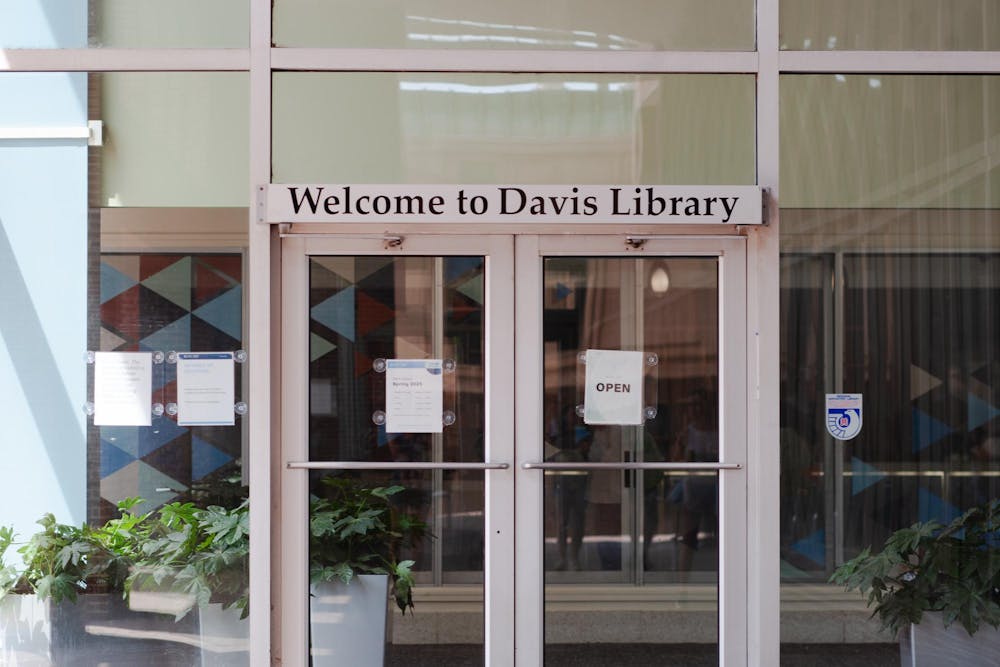Ironically enough, there is a sign in Sloane Art Library that reads "You can check out these books! YES!"
It seems obvious, but even though libraries are among the most frequented buildings on campus, students and faculty largely overlook their services.
More information than you could ever absorb is housed inside the 12 libraries comprising the UNC Library system. This trove of knowledge is constituted by 7.8 million print volumes, 2.2 million e-books, 144,000 print journals, 147,000 digital journals and thousands of audiovisual media items. In addition to academic resources, UNC Libraries also provides access to multimedia services like the Library MakerSpace and Library Data Services, enabling students to creatively apply knowledge gained from traditional research in the forms of data visualization, 3D printing and even sewing. From the medieval medical illustrations contained in the Wilson Special Collections Library to Davis Library's ArcGIS Software Guide, the sheer wealth of resources available to the humble undergraduate is astonishing.

Despite all of these resources, if you asked a UNC student when the last time they checked a physical book out from Davis, it’s highly likely that they’d say never. Of course, this isn’t the case for everyone, but the vast majority of us rarely utilize the libraries to their fullest extent.
There are some reasonable justifications for why students use alternatives. An e-book may be more appealing than lugging around a cumbersome economics textbook, but physical media has been proven to make learning more effective. Although e-books may be easier to access, comprehension significantly decreases while reading digitally. They may offer more convenience in accessibility and returns, but students and faculty should not overlook the importance of paper books nor their great availability to us here.
It can seem daunting, no doubt. With an overwhelming amount of resources and a societal lack in practice locating books, the process of checking out even one of thousands upon thousands of books can seem daunting without a proper introduction. It’s also natural for a sense of imposter syndrome to kick in — the University has a vast and often rare collection, but these resources are for students to take advantage of. As undergraduates, access to such abundance of knowledge is limited to our college careers, we shouldn’t waste that out of fear.
For example, Wilson’s Rare Book Collection offers students the opportunity to work with unique materials that are difficult to access anywhere else. Using this resource should be on every UNC student’s bucket list. The chance to interact directly with real Renaissance manuscripts or early Shakespeare prints at no cost is one of the great privileges of attending this institution. Getting to see such historic pieces in person, rather than on a digital scan, completely deepens the experience and adds a level of excitement and pleasure to your research.





